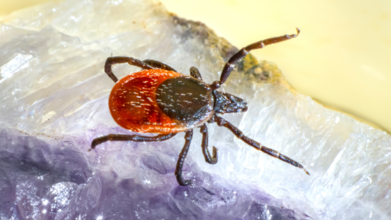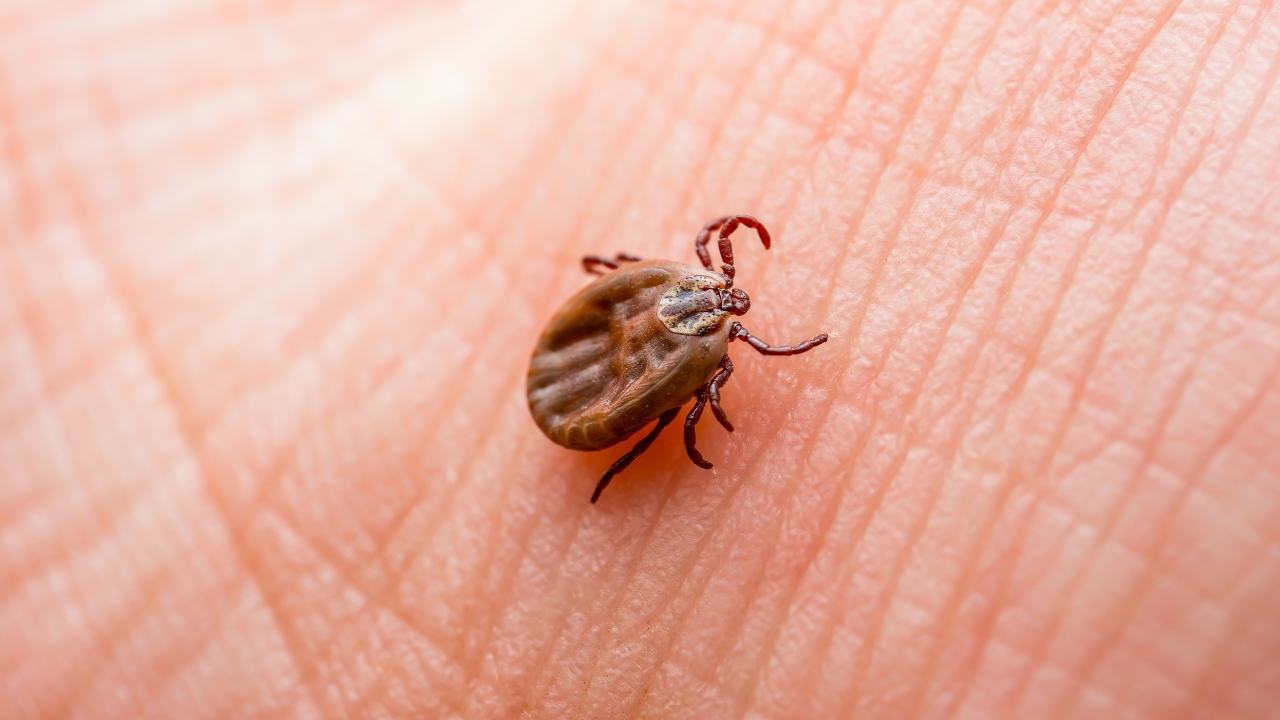- Health Conditions A-Z
- Health & Wellness
- Nutrition
- Fitness
- Health News
- Ayurveda
- Videos
- Medicine A-Z
- Parenting
- Web Stories
Aging US Population At High Risk Of Dementia, Cases Expected To Double By 2060

Image Credit: Canva
The prevalence of dementia among the aging US population is much greater than estimated, according to new research that predicts a staggering rise in cases in the coming decades. A study published today in Nature Medicine reveals that risk of developing dementia after age 55 is more than 42%, underlining a burgeoning public health challenge.
A long-term, nearly 16,000-person study reveals that lifetime dementia risk is underestimated by about half. Of nearly 3,200 diagnosed cases of dementia between 1987 and 2020, an estimated overall lifetime risk is 42%. Lifetime risk was significantly higher in women (48%) than in men (35%), largely due to women's longer life expectancy.
The study also emphasizes disturbing racial group disparities. Blacks are more at risk of experiencing dementia, attributed to factors like genetic predispositions, socioeconomic inequalities, and lower access to health care.
The number of dementia cases, currently projected to increase annually by about 500,000 new diagnoses per year, is expected to quadruple to 1 million by 2060 as a direct result of the aging Baby Boomer population. By 2040, all Boomers will be over 75 and at the critical dementia-diagnosing age, where diagnoses peak.
Along with age, other factors further increase the risk:
- Genetics: APOE4 gene mutation is the major risk factor for Alzheimer's disease, which is the most common type of dementia.
- Chronic Conditions: The risk is compounded by high blood pressure, diabetes, and obesity.
- Lifestyle: An unhealthy diet, lack of exercise, and poor mental health are all modifiable contributors.
- Hearing loss: Researchers indicate that untreated deafness among aged individuals increases risks for dementia but only one third of the infected people use the hearing aids.
Why Women and Black Americans Face a Higher Chance of Dementia?
The study revealed the cumulative nature of structural inequality throughout a lifetime. The report indicates that compared to White Americans, black Americans are more susceptible to developing dementia and are more likely to have an earlier onset of the disorder. Researchers further attribute these disparities to some long-standing issues in the form of systemic problems associated with inadequate education, nutrition, and healthcare provision.
To address this, public health efforts should focus on enhancing early-life conditions and addressing racial health inequities. For example, improved educational programs and nutrition in disadvantaged communities could reduce cognitive decline later in life.
Also Read: THIS Test Can Predict Your Dementia Risk
How Can Early Detection and Diagnosis Improve Dementia Outcomes?
While age and genetics are non-modifiable, lifestyle changes can significantly contribute to reducing the risk of dementia. Experts point out several preventive measures:
Vascular conditions like hypertension and diabetes must be managed. Regular exercise improves cardiovascular and brain health. A nutrient-rich diet, including foods like leafy greens and omega-3 fatty acids, supports cognitive function. Activities that challenge the brain, such as puzzles and reading, are linked to reduced dementia risk.
It also requires early diagnosis and intervention. New diagnostic tools are now being developed, which include biomarkers such as beta-amyloid and tau proteins that can be identified for the earliest signs of Alzheimer's disease. Such advancements open avenues to new therapies in slowing down disease progression.
Studies reveal that hearing loss is a modifiable risk factor, and unaddressed hearing impairments are strongly associated with an increased risk of dementia. However, fewer than one-third of older adults with hearing loss use hearing aids. Increasing access to hearing aids and encouraging their use may be a critical step in reducing the incidence of dementia.
Public Health Strategies Critical to Tackling Dementia
The rapid aging of the U.S. population, coupled with the expected increase in dementia cases, poses a significant challenge to healthcare systems and policymakers. Strategies must focus on:
1. Expanding Access to Care
Ensuring equitable access to diagnostic tools, therapies, and long-term care.
2. Boosting Public Awareness
Educating communities about dementia risk factors and preventive measures.
3. Advancing Research
Encouraging diverse participation in clinical trials to discover effective treatments.
4. Policy Change Implementation
Develop strategies to address lifestyle factors, early detection, and disparities.
So What Really Causes Dementia?
Dementia arises from changes in specific brain regions that disrupt the proper functioning of neurons and their connections. These disruptions lead to cognitive decline, memory loss, and impaired reasoning. Researchers have identified certain brain changes associated with specific types of dementia, but the reasons these changes occur in some individuals and not others remain unclear. Rare genetic variants have been linked to dementia in a small number of cases, providing insights into its biological underpinnings.
Although there is no definitive way to prevent dementia, adopting a healthy lifestyle may help reduce risk factors. Regular physical activity, a balanced diet, and maintaining mental and social engagement are believed to support cognitive health.
Early detection plays a vital role in managing dementia. While some causes are treatable, many remain without effective treatments. Diagnosing dementia early can provide individuals and families with opportunities to plan ahead and access necessary support.
In its initial stages, many people with dementia can continue their daily routines, but as the condition progresses, they may need to adopt new coping strategies to adjust to increasing challenges. Ongoing research aims to uncover more about the causes and potential interventions, offering hope for improved care and prevention.
The projected doubling of dementia cases by 2060 calls for immediate and coordinated action. Addressing this crisis requires prioritizing health equity, investing in preventive care, and leveraging advancements in science and technology. With focused efforts, the United States can mitigate the devastating impact of dementia on individuals, families, and the healthcare system.
Lifetime Risk And Projected Burden Of Dementia. Nature Medicine. 2025
Invasive New Tick Species Could Spread Little-Known Infectious Disease, Scientists Warn

Credits: Canva
A highly invasive tick species is spreading across the United States, carrying with it a previously unknown but potentially crippling infection that is causing scientists concern. First identified in New Jersey in 2017, the Asian longhorned tick has been detected in at least 21 states. With rising temperatures extending tick season and broadening their habitat, scientists fear that these invasive parasites may catalyze the spread of ehrlichiosis, a bacterial infection that is already increasing in the U.S.
Americans have linked ticks for decades with Lyme disease. But as climate change continues to reshape ecosystems and new invasive populations find a toehold, the risk landscape is evolving. Ehrlichiosis, previously rare, is now emerging as a major public health problem—and the experts say the risks are likely to increase.
Indigenous to East Asia, the Asian longhorned tick is an opportunistic species. It came to other nations such as Australia, New Zealand, and various Pacific islands before it arrived unobtrusively in the United States. Scientists speculate that it most likely rode in on imported animals or livestock, but their point of entry is not known.
Since its New Jersey discovery, the tick has consistently gained a foothold throughout the Northeast, Midwest, and South. Michigan had its first sighting during this summer, indicating how rapidly its range is spreading. Modeling research indicates that the majority of North America—southern Canada to almost every nook and cranny of the continental U.S.—poses acceptable habitat for this resilient species.
What's more frightening about the longhorned tick is that it can reproduce without mating. One female will produce thousands of offspring, which enables populations to increase quickly. Unlike most indigenous animals, this tick is also able to co-feed on the same host with other ticks and retrieve and pass along pathogens very efficiently.
What is Ehrlichiosis?
The tick-transmitted disease ehrlichiosis, caused by the bacterium Ehrlichia chaffeensis, has risen in the shadows of recent years. A bite produces its effects usually one to two weeks later, in the form of fever, chills, muscle pain, headaches, and crushing fatigue.
Though most of them recover with early treatment, the disease becomes life-threatening if neglected. In serious situations, it develops into respiratory failure, brain and nervous system injury, uncontrollable bleeding, or organ failure. Approximately 60% of patients need to be hospitalized, and about 1% die from the disease, as per the CDC.
Confirmed cases went from only 200 in 2000 to over 2,000 in 2019. Experts, however, believe these figures are merely the tip of the iceberg. Rutgers University studies indicate that as much as 99% of infection may go undetected or unreported, masked by nonspecific flu-like symptoms doctors may attribute to other explanations.
Is Climate Change Contributing To Tick-Borne Diseases?
The biology of ticks is closely coupled with the weather. In the past, long, frigid winters kept tick populations low, both in terms of their numbers and in terms of the diseases they were spreading. Climate change is rewriting that season script, though.
"We are losing winter," says Connecticut's tick-testing program director, Goudarz Molaei. "And this tick, like others, will be active year-round."
Warmer, shorter winters mean ticks come out of hibernation earlier and remain active for longer periods, raising the chances of human contact. The CDC just released word of an all-time high number of emergency room visits in July for tick bites—illustrating how rapidly the risks are increasing.
The longhorned tick is not coming alone. A study in iScience reported seven non-native tick species arriving in Connecticut during 2019-2023. They rode in on livestock, pets, or travelers and are potential carriers of domestic and exotic diseases.
Several of these ticks carried bacteria similar to those causing Rocky Mountain spotted fever, a lethal disease recently starting to appear in Connecticut even though it has been nonexistent there historically. Other invasive ticks are recognized carriers of Theileria orientalis, a cattle-decimating parasite not yet shown to pose danger to humans.
Worldwide, ticks spread over 17% of infectious diseases in humans, the World Health Organization finds. In the United States, they are responsible for 77% of all vector-borne illnesses, case loads more than doubling over the past 15 years. The introduction of invasive ticks merely increases the stakes.
Why Invasive Ticks Are Different?
In contrast to indigenous species, invasive ticks present two such significant threats: they increase the range of current diseases and bring with them the potential to introduce entirely new ones. With their explosive ability to breed and thrive in a variety of climates, longhorned ticks are particularly well-suited to redefine the U.S. disease map.
Their diet also distinguishes them. Though they usually prefer livestock, they will consume humans if given the chance. And when there is more than one tick species that feeds on a single animal, they can share pathogens with each other in what is called "co-feeding transmission," multiplying the chances of new disease dynamics.
How Ticks Spread Diseases?
Ticks are not born with pathogens. They pick them up after they feed on an infected animal like deer, rodents, or livestock. Ticks being infected have the ability to transmit the pathogen to the next host—occasionally human.
America has about 50 native tick species that will bite humans and transmit diseases such as Lyme disease, babesiosis, anaplasmosis, and Rocky Mountain spotted fever. Invasive ticks, however, expand that menu of potential harm by introducing pathogens from elsewhere in the world into American habitats.
Is There Any Way to Avoid Tick-Borne Disease?
As scientists track the spread of invasive ticks, members of the public can act to minimize individual risk. Long sleeves and long pants in tick-infested areas, repellents that have DEET or permethrin, and careful tick checks after going outside are the most effective measures.
Medical professionals also advise travelers to report recent travel when they go for medical attention for tick bites, as invasive ticks from other countries are often hard to distinguish from local ones. Prompt diagnosis and treatment of ehrlichiosis and other diseases can be the difference between life and death.
The outbreak of invasive ticks in the United States illustrates how global change, fueled by climate change, trade, and travel, reconfigures local health threats. Within a decade, a species foreign to most Americans is now a possible cause of a major public health epidemic. Experts predict it's only a matter of time before other invasive ticks catch local or native pathogens, or even create new ones not previously observed in the US.
Wyoming Health Officials Hunt for 200 Exposed Tourists After Bat-Infested Cabins Spark Rabies Scare

Credits: Health and me
Nearly 200 tourists are being traced by Wyoming health officials after bat-infested cabins at Grand Teton National Park sparked a rabies scare, raising urgent public health concerns. For some tourists who came for a trip to Wyoming’s Grand Teton National Park promises postcard-worthy mountains, pristine lakes, and wildlife encounters. But for hundreds of tourists this summer, the trip came with an unexpected and terrifying souvenir, possible rabies exposure.
State health officials are now urgently tracking down more than 200 people from 38 states and seven countries who may have been exposed to the near-always fatal virus after staying in bat-infested cabins at Jackson Lake Lodge.
Between May 15 and July 27, guests lodged in eight specific cabins—rooms 516 through 530—may have unknowingly slept just beneath a bat colony nesting in the attic. After multiple reports of bats flying into guest rooms, the lodge shut down those cabins on July 27. By then, more than 250 reservations had been fulfilled, meaning up to 500 guests could have rotated through the infested spaces.
Travis Riddell, director of the Teton County Public Health Department, explained that repeated sightings strongly suggest a colony, not isolated strays. “Although there were a lot of people exposed in this incident, one positive about it is that we know who 100 percent of those people are,” he said. That knowledge is crucial for officials working to prevent the spread of a disease that almost always turns fatal once symptoms appear.
What is Rabies?
Rabies is one of the deadliest viruses known to humans. Spread through the saliva of infected animals—typically bats, raccoons, skunks, and foxes—it attacks the nervous system, traveling to the brain where it causes swelling, neurological breakdown, and ultimately death. Once symptoms begin, the disease is virtually untreatable.
Dr. Alexia Harrist, Wyoming’s State Health Officer, emphasized that even the smallest bite or scratch can be dangerous. “Bats are the area’s most common host for rabies and their bite leaves such a small mark that it is rarely visible,” she explained. This is what makes cases like Jackson Lake Lodge so alarming: guests could have slept through a bat encounter without ever realizing it happened.
What Counts as Rabies Exposure?
Health officials categorize rabies risk based on contact. The highest concern is for those who:
- Were bitten or scratched by a bat
- Had bat saliva touch broken skin or mucous membranes
- Touched a bat directly
- Could not confirm exposure, such as children, deep sleepers, or individuals with impaired awareness
Not every guest will require the post-exposure prophylaxis vaccine, but because the stakes are life and death, officials are urging caution.
Rabies Vaccine And Its Cost
Rabies is preventable if treatment starts quickly. A regimen of immune globulin plus a four-to-five dose vaccine series given over two weeks is almost 100 percent effective at preventing the virus from taking hold.
The treatment is expensive and sometimes difficult to access. In Wyoming, a single course can cost up to $16,000 per person, with some hospitals charging double that amount. Multiply that by hundreds of potentially exposed tourists, and the financial toll could be staggering.
Yet health officials stress that money should not deter people from seeking care. As Dr. Harrist put it, “The death of one person because of something that we could have otherwise prevented is not acceptable.”
Is US Awaiting A New Health Crisis?
Though the dog-specific rabies variant was eliminated in the U.S. in 2007 thanks to vaccination laws, rabies remains firmly entrenched in wildlife populations. Bats, raccoons, skunks, and foxes are the primary reservoirs, and each summer, local health departments from Maine to California field calls about possible exposures.
In fact, within just the past month, counties across multiple states—including North Carolina—have reported rabies-positive animals and urged residents to stay alert. In one North Carolina case, a fox attacked a young mother outside her home, biting her leg and hand. Both she and another victim are receiving treatment.
These incidents illustrate a troubling trend: while human rabies cases remain rare in the U.S. (usually one to three per year), wildlife exposures are rising, especially during summer when both humans and bats are most active.
Mass exposure events are rare, but not unheard of. The last time Teton County saw something similar was in 2017, when a bat colony discovered at AMK Ranch led to over a dozen people receiving treatment.
This year’s case, however, is on a much larger scale. The fact that officials must now coordinate across nearly 40 states and multiple countries underscores how modern travel can turn a local outbreak into a global health concern. The U.S. Centers for Disease Control and Prevention (CDC) has been brought in to help track down foreign visitors who stayed at the lodge.
For Wyoming health authorities, the challenge is two-fold: alerting potentially exposed individuals without causing unnecessary panic. Officials stress that people who did not stay in the affected cabins—or who stayed elsewhere at the lodge—face no risk. The lodge itself has taken aggressive steps to secure the area, and other parts of the property remain open, including as host venue for the high-profile Jackson Hole Economic Policy Symposium.
Emily Curren, Wyoming’s public health veterinarian, praised the lodge company for swift action. “They’ve done a fantastic job of doing their due diligence to make sure everyone coming in is going to be as safe as possible,” she said.
What Tourists Should Know About Bat Encounters?
Bats are an essential part of many ecosystems, eating insects and pollinating plants. But they are also the leading source of rabies in the U.S. Signs of rabid bats include flying during the day, erratic circling, or being unable to fly at all. Anyone who finds a bat indoors should avoid direct contact and call local animal control or health authorities immediately.
The Wyoming rabies scare is a stark reminder that while rare, rabies is not a relic of the past. It’s still out there, carried silently by wildlife and capable of turning a family vacation into a medical emergency.
Billie Shepherd Opens Up About 'Horrendous' Diagnosis That Left Her Bed Bound

(Credit - billieshepherdofficial/instagram)
The beloved TV personality Billie Shepherd, well known for her role in the reality TV show, ‘The Only Way Is Essex’ recently opened up about her Lyme disease diagnosis. In an interview with The Mirror, she detailed how she ‘couldn’t even get out of bed’ and even had difficulty using the washroom.
She was diagnosed earlier this year, and it left her with chronic fatigue and debilitating pain. "I was in bits. I was hysterically crying, because I was in so much pain," she told The Mirror. "It was hard for me to sit on the toilet without Greg helping me. It was so scary."
What Is Lyme Disease?
The Cleveland Clinic explains that Lyme disease is caused by the bacteria Borrelia burgdorferi, which is transmitted to humans through the bite of an infected deer tick (also known as a black-legged tick). Ordinary "wood ticks" and "dog ticks" do not carry this bacteria.
The first cases were identified in 1975 in Lyme, Connecticut, when a cluster of children were diagnosed with what was initially thought to be juvenile rheumatoid arthritis. Researchers later discovered that the outbreak was linked to bites from infected deer ticks.
What Are The Signs And Symptoms Of Lyme Disease?
The symptoms of Lyme disease vary depending on the stage of the infection.
Early Symptoms of the disease can include Erythema migrans (EM) rash which is an expanding lesion that often looks like a bull's-eye. It appears at the site of the tick bite between one and four weeks after the bite. Other symptoms include,
- Fever
- Headache
- Stiff neck
- Body and joint aches
- Fatigue
- Swollen lymph nodes

During the early disseminated stage of Lyme disease, symptoms can include multiple rashes, paralysis of facial muscles known as Bell's palsy, an irregular heartbeat, and sensations of numbness or tingling. If left untreated, the late stage of the disease can manifest with recurring episodes of swollen joints, especially in the knees (arthritis), difficulty concentrating often called "brain fog," and widespread nerve damage (polyneuropathy).
How Is Lyme Disease Diagnosed?
Shepherd detailed how getting to the diagnosis was not easy. She explained how it took two months and numerous blood tests for doctors to diagnose her.
A healthcare provider will diagnose Lyme disease based on symptoms, a physical exam (including checking for a rash), and your potential exposure to tick-infested areas. It's important to note that many people don't remember being bitten because the ticks are tiny and their bites are often painless.
The diagnosis is confirmed with a blood test. If the initial test is positive or inconclusive, a second test is performed. A diagnosis of Lyme disease requires two positive or inconclusive test results
Billie explained how her healthcare professionals believe she may have been bitten by a tick as long as three years ago, with the infection remaining dormant until recently. While Lyme disease is typically treated with antibiotics, Shepherd's symptoms were initially exacerbated by the medication.
What Should You Do If A Tick Bites You?
If a tick bites you, follow these steps to remove it safely:
- Use blunt tweezers to gently but firmly pull the tick near its "head" at the skin's surface until it releases.
- Avoid crushing the tick's body or touching it with your bare fingers to prevent exposure to the bacteria.
- Wash the bite area thoroughly with soap and water.
- Do not use home remedies like kerosene, petroleum jelly, or a hot cigarette to remove the tick.
© 2024 Bennett, Coleman & Company Limited

